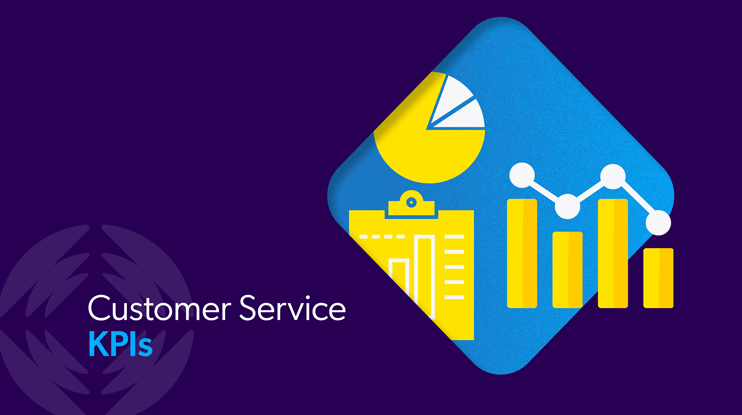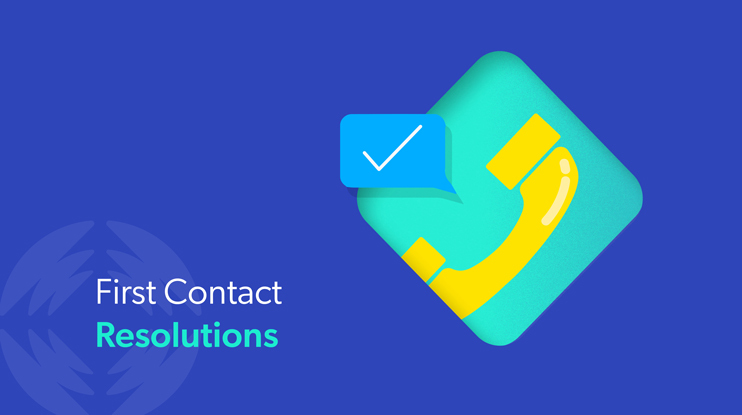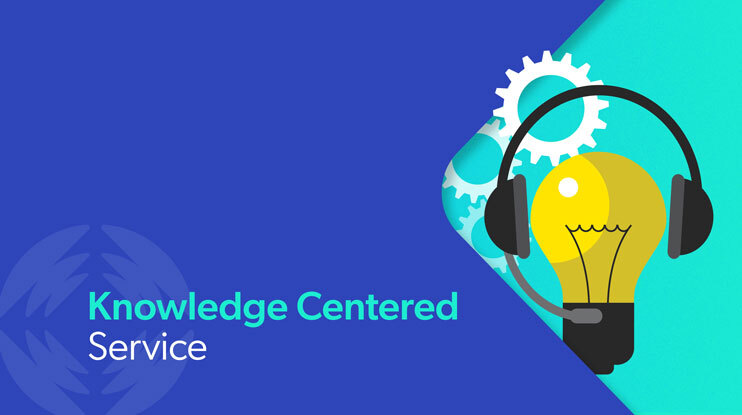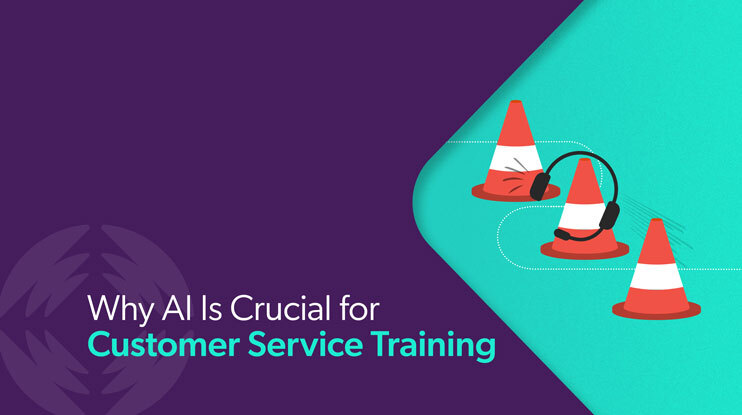Wondering which customer service KPIs will help you best evaluate your service and support efforts?
According to McKinsey, businesses are facing a trifecta of customer service challenges in 2024. For one, it’s difficult to hold on to talent — over half of customer care managers encountered increased attrition last year.
Another challenge is the location of your customer service workforce. Some companies reported that 85% of their workforce is remote. Add to this the customer expectation for seamless service, and you have a perfect storm of customer service challenges.
To address these challenges, maintain team satisfaction, and improve performance, you need to measure the right customer service KPI metrics. We know that making sense of your data is a large task. Let’s identify which metrics monitor performance, identify pain points, and indicate it’s time to make changes in your customer support strategy.
Plus, we’ll delve into how AI search can be a competitive differentiator in tracking these metrics.
Why It’s Important to Measure Customer Service KPIs
First, we think it’s important to clarify why measuring customer service performance is essential for business and customer success.
In an Acquia survey, just 10% of 6,000 consumers strongly agreed that most brands met their expectations for a good experience. But when this question was posed to 600 director-level marketers, over 80% felt they were meeting or exceeding customer experience expectations.
Companies can use customer service KPIs to close this customer vs. brand experience gap with the goal of:
Improving customer satisfaction
Before you can deliver excellent customer service, you need to define what “excellent” looks like. Metrics like customer effort score, ticket resolution rate, and net promoter score paint a clear picture of what customers think about your service.
Reducing customer churn
Your existing customers represent your clearest path to growth and profit, but only if you can hang on to them. According to data from SuperOffice, increasing customer retention by 2% is equivalent to cutting costs by 10%.
Also keep in mind that acquiring a new customer can cost up to 5X more than retaining existing ones. Understanding what your customers need — and what motivates them to leave — can reduce churn and keep your business growing.
Improving team performance
If cases have too great of an average handle time or support reps are constantly repeating themselves, it’s time to make a change. To achieve real change, you need to know where the bottlenecks are. Monitoring what top performing agents are doing and measuring things like employee satisfaction and turnover helps you pinpoint the areas that need attention.
Relevant reading: How to Use Insight Panel Analytics for Agent Coaching
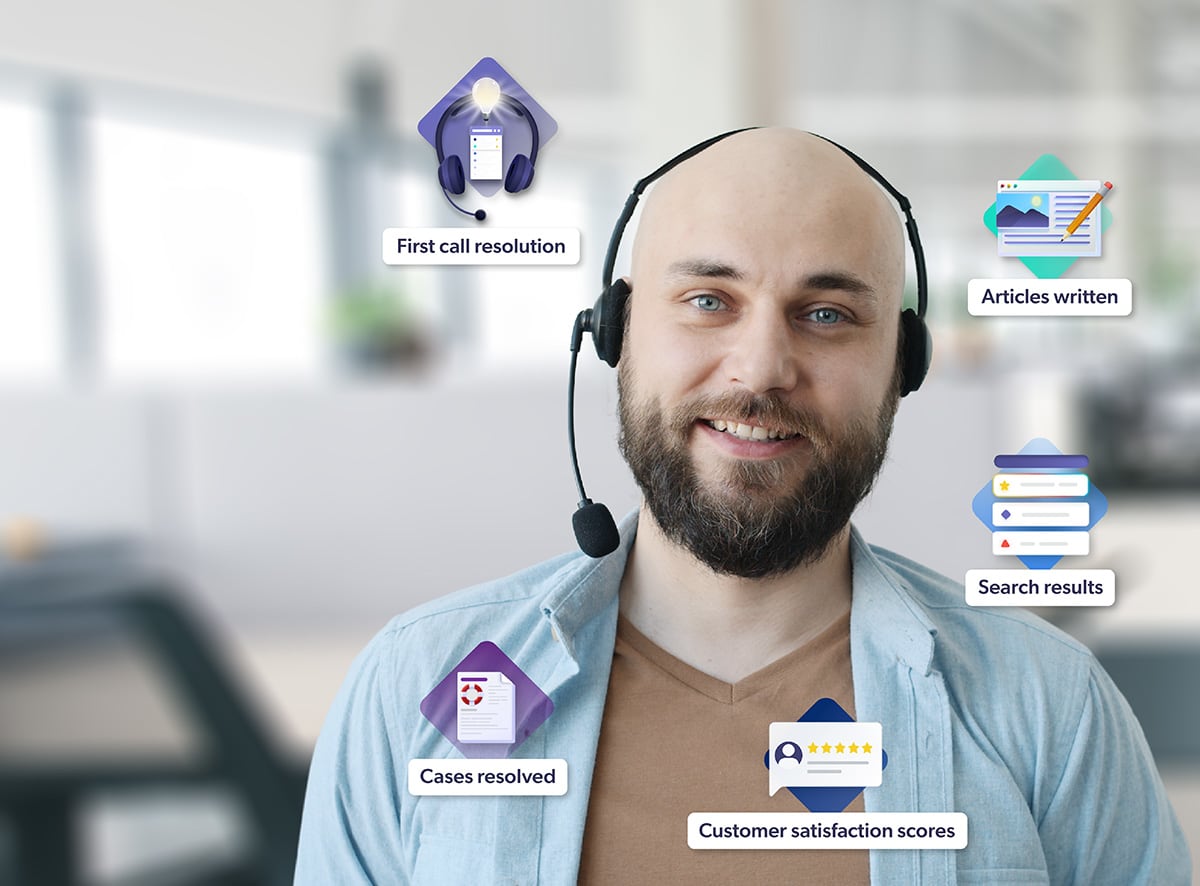
Give Service Teams What They Need
Our previous EX lndustry Report revealed that, on average, workers spend nearly half a day — every day — looking for the information they need to do their job.
A third of respondents said that being unable to find information left them frustrated and burned out. Over 40% said that the relentless app-hopping combined with ineffective search technology made them feel less confident about their quality of work.
Giving service teams what they need means making it easy to find and access information. This can be done by:
- Providing a searchable knowledge base of support articles
- Centralizing information via an insight panel embedded directly in their flow of work
- Implementing an AI-powered chatbot to deflect simple customer inquiries
- Automating ticket routing to the right team or individual
- Giving agents visibility into customer interactions across channels
- Clarifying the KPIs you’re using to measure success
What Customer Service Metric Should You Measure?
Now that we’ve addressed why you should measure customer service KPIs, let’s look at what metrics you should be measuring. The exact KPIs depend on your business goals, but we think there are a few essential metrics that can help most companies improve their customer service team’s performance, reduce abandonment rate, and keep agents happy.
Overarching Customer Satisfaction KPIs
These are broad metrics that focus on the overall health of your customer service program.
Ticket volume by channel
Tracks the number of support tickets by each customer service channel. Tickets come in by phone, email, live chat, social media, and more. Knowing what channels get the most service requests helps you allocate appropriate resources and staffing to a given channel, ensuring adequate coverage across all touchpoints.
Number of tickets/resolved tickets
Calculating how many tickets are open at any given time, and how quickly are they being resolved, is a good way to know if your team is keeping up with demand. A low percentage means there’s a backlog of resolved tickets. A higher number suggests that tickets are being resolved quickly, which is a good sign that your reps have the information they need to resolve issues.
Self-service success rate (SSR)
The rate at which customers can complete a desired transaction/find information in a knowledge base or customer community.
High self-service rates indicate that customers are resolving issues on their own,providing insight into the effectiveness of your knowledge base, chatbots, and the quality of your support articles. In a self-service journey, the customer has no intention of talking to a support agent.
AI-powered self-service does much more than just surface results — AI helps connect searchers to the right answer. And it doesn’t have to stop there, also serving up the next best action and helping customers get the most out of their relationship with your enterprise. Xero improved their self-service success rate by 20% in just six weeks with Coveo Relevance Generative Answering.
Case deflection
The rate at which customers find their own answers to issues for which they would’ve otherwise called support. A high case deflection rate means they were ready to submit a case, but your resources eliminated that need. One example is that of Informatica, which saved $3.5M annually from explicit case deflection, powered by Coveo.
The difference between case deflection and self-service success rate lies in customer intent. Where self-service success rate considers all customer interactions, deflection only considers those customers who would’ve submitted a ticket, but didn’t because a chatbot or knowledge base article resolved their issue.
Escalation rate
The number of support cases that go beyond first-line customer service agents. Tickets that aren’t resolved on the first pass are typically diverted to a supervisor or manager, suggesting that agents are not equipped with the information they need to resolve customer inquiries. This leads to frustration on both the customer and agent side.
An AI-powered insight panel can help support agents, directly in their flow of work. For example, athenahealth used insight panels to empower their tier 1 staff and reduced case inflow to tier 3 by 50%.
Average handle time/average resolution time
Measures how long it takes agents to resolve tickets. Average resolution time factors in the total talk time plus after-call work time divided by the number of calls. After-call work includes tasks like logging tickets and documenting customer interactions. Shorter resolution times generally indicate that agents can find the information they need to resolve issues quickly.
First response/first reply time
The amount of time it takes for an agent to reply to a customer’s initial inquiry. A high average reply time for initial requests suggests that you’ve kept your customers waiting a long time, which translates to poor customer experience.
It can also mean your reps are either overwhelmed with tickets or are unable to find the information they need (or both).
Cost per resolution
The amount of money it costs to resolve a customer issue. This metric considers the salary of customer service reps, plus any other associated costs like training, support tools, and overhead. To calculate this metric, divide your total customer service costs by the total number of resolved tickets for a given time period. Things like training, intelligent search, and higher deflection rates all contribute to lowering your cost per resolution.
First contact resolution (FCR)
When an agent resolves a customer’s issue after the first call or interaction, it’s called a first contact resolution. You determine your FCR rate by dividing total first contacts resolved by total tickets received. Some businesses consider FCR to be a self-service metric, but it’s most often applied in the contact center.
A low first contact resolution rate can flag issues that need attention like high ticket volumes, staffing shortages, and an inability for reps and customers to find the information they need.
With AI, you can improve FCR for both customer and customer service representative needs. One example is Tyler Technologies, which leveraged Coveo AI to achieve a 23% improvement in first call resolution rate average across departments.
Abandonment rate
This is a call center metric that refers to the percentage of customers who hang up before their call is answered by an agent. Average abandonment rates are about 5% to 8%. A high rate of call abandonment could mean your support team is having trouble keeping up with demand.
Customer Resolution KPIs
These metrics focus on measuring overall customer experience and satisfaction around ticket resolution. They help you understand if customers are happy (or not) with how their issue was resolved. If you consistently provide good service, you’ll find yourself a new loyal customer.
Customer effort score (CES)
CES measures how difficult it is for your customers to resolve their issue. By leveraging your usage analytics, you can track how long it takes and how hard it is (based on the number of clicks it took) for your customers to find what they’re looking for. It’s an indicator of customer satisfaction, based on what customers are searching for and not finding. CES provides a lens into what your customers need and expect from your organization, which in turn identifies content gaps and opportunities to better meet their needs.
Customer satisfaction score (CSAT)
CSAT measures the level of customer satisfaction with your support process (or team member) after an issue is resolved or abandoned. You obtain your CSAT score by surveying customers after their issue has been resolved. Your company’s overall score is determined by dividing total CSAT scores collected with the total positive scores and multiplying by 100.
Total tickets / tickets per customer
A breakdown of all tickets (resolved and unresolved) by customer. This metric helps you understand how many issues each customer has and if they’re a “problem customer.”
Top topics
These are the issues that customers contact your team about most frequently. Top topics help identify recurring problems and unearth opportunities for creating self-service solutions (like an FAQ or knowledge base). This metric can also inform how you optimize your self-service experience and improve your customer service approach.
Consistent resolutions
Measures the number or percentage of issues that are consistently resolved either with or without escalation. This metric helps identify how and where your customer service process is working and can be used to create processes and training materials for your team.
Net promoter score (NPS)
Measures customer satisfaction and loyalty. To calculate your NPS, survey customers after they’ve interacted with your support team and ask them how likely they are to recommend your company to a friend or colleague on a scale of 0 to 10. Then group respondents into three categories: Promotors (9-10), Passives (7-8), Neutrals/Detractors (0-6).
Customer retention rate
This is a loyalty metric that helps you gauge overall customer satisfaction. It’s gleaned by dividing total customers that remain at the end of a specified time period (e.g., month, year, quarter) with the number of customers at the beginning of that same period. Satisfied customers tend to stick around, so a high retention rate is a good indicator that you’re providing great customer service.
Employee/Agent KPIs
These customer service KPIs are meant to ”test the testers.” They gauge the satisfaction of your customer service agents and help you understand if they’re likely to stay with the company or not. They surface areas where your team may need additional training or support.
Top performing agents
A metric that identifies agents who are going above and beyond to deliver great customer service. One of the most effective metrics for measuring the proficiency of your team is their average handle time (AHT). This metric is often calculated by adding together an agent’s total talk time, total hold time, and total after-call work. Then divide it by the number of calls handled.
Employee satisfaction
Gauges how content your employees are, which is often reflected in their level of motivation, openness to change, and productivity. It can also help you retain employees who may not be happy by identifying problems before they become bigger issues. There are several ways to measure this, including surveys, focus groups, and one-on-one interviews.
Employee turnover rate
Measures the rate employees leave your organization. Unhappy teams tend to have high turnover rates and high turnovers impact the quality of your customer service process. To calculate your employee turnover rate, divide the number of employees who left in a given time period by the total number of employees at the beginning of that period.
A Customer Service KPI-driven Support Strategy Relies on Data
Tracking customer service KPIs helps improve customer and agent experiences. To this end, your support strategy should be entirely driven by data. Your customers are telling you their wants and needs, and so are your agents. Listen to their roadblocks and frustrations throughout their support experience, and each customer journey. You just have to listen.
The number of customers multiplied by every interaction they have with your organization can make “listening” seem impossible. This is where technology can help. An insight engine does the heavy lifting and helps you make data-driven decisions that will improve your support strategy, enhance your customer experience and exceed customers’ expectations.
If you’re interested in hearing more about how you can upskill your agents and deliver effective customer service, check out our ebook.

